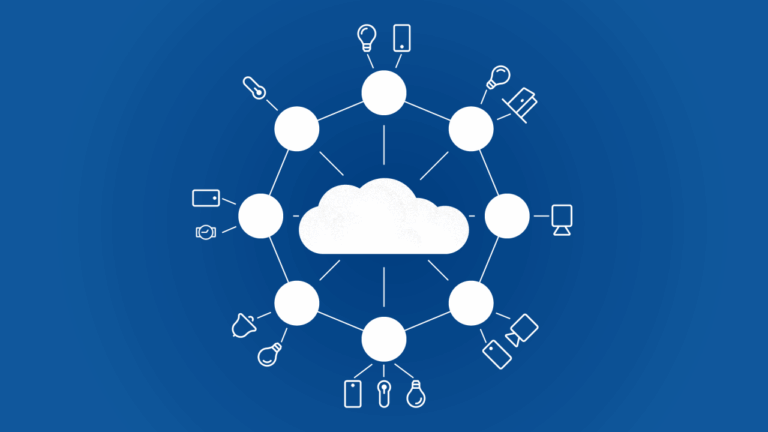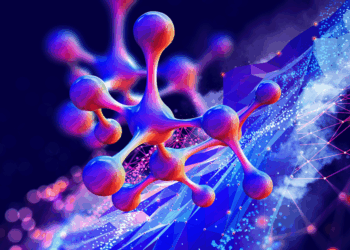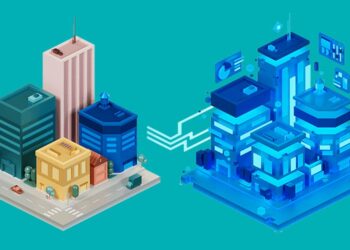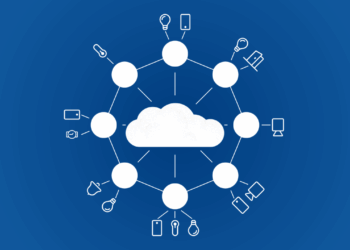The digital world is experiencing an explosion of data, generated by billions of interconnected devices, from smart sensors and autonomous vehicles to industrial machinery and personal wearables. This unprecedented volume and velocity of information are pushing the traditional centralized cloud computing model to its limits. Enter edge computing, a revolutionary paradigm that brings computation and data storage closer to the source of data generation. It’s not just a technical optimization; it’s a fundamental shift enabling real-time processing, ultra-low latency, enhanced security, and unprecedented operational efficiency. As the Internet of Things (IoT) proliferates and artificial intelligence (AI) demands immediate insights, edge computing surges as the critical enabler for the next wave of digital transformation. This comprehensive exploration delves into the core principles of edge computing, its profound impact across diverse industries, the significant challenges it addresses, and its essential role in shaping our hyper-connected, intelligent future. Understanding this burgeoning field is vital for anyone navigating the intricate landscape of 21st-century technology.
The Genesis of Edge
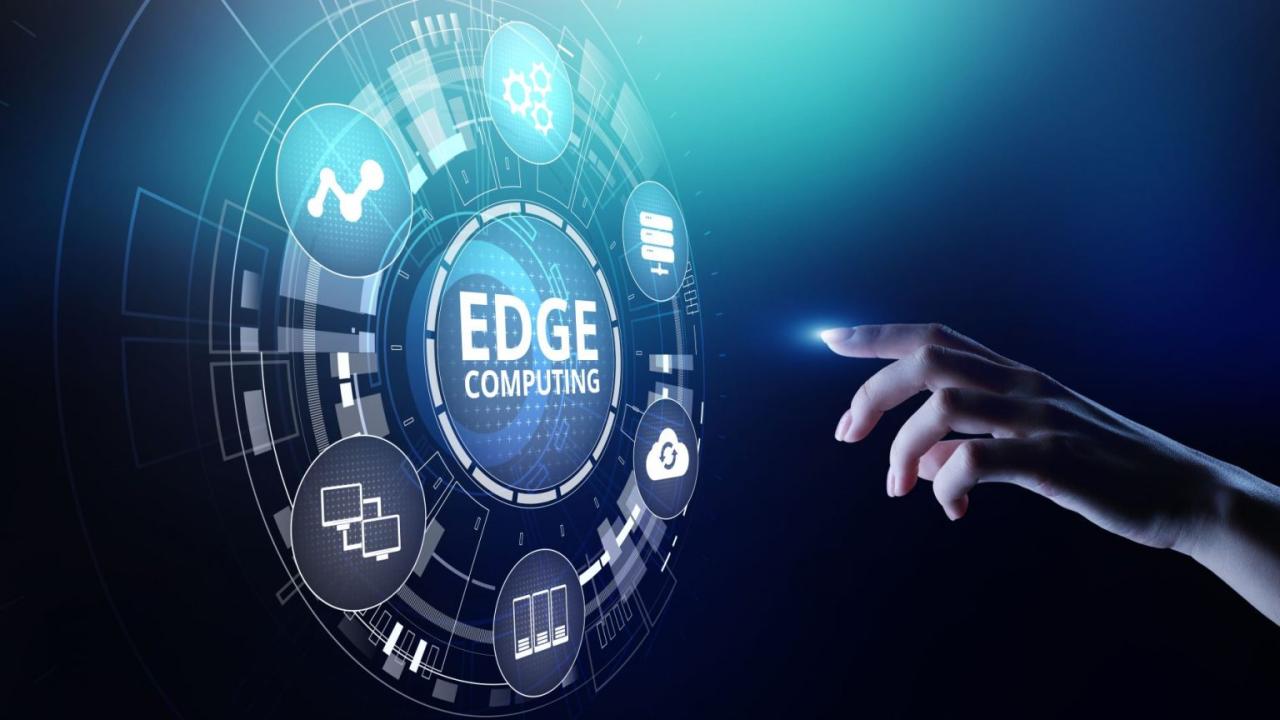
To appreciate the necessity and power of edge computing, it helps to understand the limitations of a purely centralized cloud model in a data-rich world.
A. The Cloud Computing Era
The rise of cloud computing revolutionized IT by offering scalable, on-demand computing resources over the internet.
- Centralized Data Centers: Data is transferred from devices to large, centralized data centers for processing and storage.
- Scalability and Flexibility: Cloud offers immense scalability, allowing businesses to easily expand or shrink their computing resources.
- Cost Efficiency: Reduces the need for organizations to maintain their own extensive IT infrastructure.
- Initial Success: Perfect for applications where latency isn’t critical, and data volume is manageable, such as web hosting, email, and traditional business applications.
B. The Emergence of Bottlenecks
As the IoT exploded, new challenges surfaced that the centralized cloud struggled to address efficiently.
- Data Volume Overload (Bandwidth Constraints): Sending petabytes or exabytes of data generated by billions of IoT devices from the edge to the cloud for processing became impractical, costly, and saturated network bandwidths.
- Latency Issues: For applications requiring real-time responses (e.g., autonomous vehicles, remote surgery), the round-trip delay (latency) between the device and a distant cloud data center was unacceptable. Decisions needed to happen in milliseconds, not tens or hundreds of milliseconds.
- Security and Privacy Concerns: Transmitting all raw data to a central cloud could expose sensitive information, increasing security risks and complicating compliance with data privacy regulations.
- Reliability Gaps: Cloud connectivity might be intermittent or unavailable in remote locations, making critical operations unreliable.
These limitations spurred the development of edge computing, bringing processing power closer to the data source.
C. The Edge Computing Principle
Edge computing is a distributed computing paradigm that brings computation and data storage closer to the location where data is generated, rather than sending it to a centralized cloud.
- Proximity to Data: Processing occurs on “edge devices” or “edge servers” physically located near the data sources.
- Real-time Processing: Enables immediate analysis and response to data, crucial for time-sensitive applications.
- Reduced Bandwidth Usage: Only necessary data or processed insights are sent to the cloud, significantly lowering network traffic.
- Enhanced Security: Sensitive data can be processed and filtered locally, reducing exposure during transit.
- Improved Reliability: Operations can continue even with intermittent or no cloud connectivity.
This fundamental shift creates a more agile, responsive, and efficient digital infrastructure, perfectly suited for the demands of modern, data-intensive applications.
The Technological Underpinnings of the Edge Ecosystem
Edge computing is not a single technology but a layered ecosystem of hardware, software, and networking advancements.
A. Edge Devices and Sensors
These are the “things” that capture data at the very perimeter of the network.
- IoT Sensors: Temperature, pressure, motion, light, chemical, and countless other sensors collecting environmental and operational data.
- Cameras and Vision Systems: Smart cameras for video analytics, security surveillance, quality control, and autonomous navigation.
- Robotics: Industrial robots, autonomous mobile robots (AMRs), and service robots with onboard processing capabilities.
- Wearables: Smartwatches, fitness trackers, and health monitors generating personal biometric data.
- Smart Appliances and Consumer Devices: Connected refrigerators, smart speakers, and home automation devices.
- Vehicle Computers: Onboard systems in autonomous cars, drones, and connected vehicles that process sensor data for real-time decision-making.
These devices form the outermost layer, often performing initial data filtering and aggregation.
B. Edge Gateways
Edge gateways act as intermediaries between the edge devices and the broader network or cloud.
- Data Aggregation: Collect data from multiple edge devices.
- Protocol Translation: Convert data from various device-specific protocols into standardized formats.
- Local Processing: Perform initial data analysis, filtering, and aggregation to reduce the volume sent upstream.
- Security Functions: Enforce local security policies and provide firewall capabilities.
- Connectivity: Connect to the cloud or other parts of the network via wired or wireless (e.g., 5G, Wi-Fi) connections.
C. Edge Servers / Micro Data Centers
These are small-scale computing environments deployed closer to the data sources, providing more significant processing capabilities than gateways.
- Distributed Computing: Small data centers or robust servers deployed in factories, retail stores, cell towers, or remote facilities.
- Real-time Analytics: Capable of running complex AI/ML models, performing real-time analytics, and making immediate decisions without cloud round-trips.
- Local Storage: Store data relevant to local operations for immediate access and reduced reliance on cloud storage.
- Optimized for Edge Environments: Often ruggedized and designed to operate in non-traditional data center environments.
D. 5G Connectivity
5G’s ultra-low latency and high bandwidth are critical for unlocking edge computing’s full potential.
- Fast Data Transfer: Rapidly moves data between edge devices, gateways, and edge servers.
- URLLC (Ultra-Reliable Low-Latency Communication): Ensures the necessary responsiveness for real-time, mission-critical edge applications.
- mMTC (Massive Machine-Type Communication): Connects the vast number of IoT devices that generate data at the edge.
- Network Slicing: Allows dedicated network slices to be optimized for specific edge use cases, ensuring guaranteed performance.
5G and edge computing are mutually enhancing, with 5G enabling broader edge deployment and edge processing making 5G applications truly viable.
E. Artificial Intelligence (AI) and Machine Learning (ML) at the Edge
AI algorithms are increasingly deployed directly on edge devices or edge servers.
- On-Device AI (TinyML): Running lightweight ML models directly on resource-constrained devices for immediate inferencing (e.g., object detection on a smart camera).
- Edge AI: Deploying more complex AI models on edge servers to perform real-time analytics and decision-making without constant cloud connectivity.
- Reduced Latency for AI: Critical for AI applications requiring instant responses, such as autonomous navigation or industrial anomaly detection.
- Privacy Enhancement: Processing sensitive data locally reduces the need to send it to the cloud for AI analysis.
Edge Computing’s Transformative Impact Across Industries

The widespread adoption of edge computing is fundamentally reshaping operations and enabling new capabilities across numerous sectors.
A. Manufacturing and Industrial IoT (IIoT)
Edge computing is central to the vision of Industry 4.0 and smart factories.
- Real-time Quality Control: AI-powered vision systems at the edge detect defects on production lines instantly, preventing faulty products from moving down the line.
- Predictive Maintenance: Sensors on machinery, analyzed by edge AI, predict equipment failures, allowing for proactive maintenance and minimizing costly downtime.
- Automated Guided Vehicles (AGVs) and Robotics: Edge processing enables autonomous navigation, collision avoidance, and real-time coordination of robots on the factory floor.
- Operational Efficiency: Optimizing energy consumption, resource allocation, and production flow in real-time.
- Worker Safety: Edge-connected sensors can detect hazardous conditions or human presence near dangerous machinery, triggering immediate warnings or shutdowns.
B. Autonomous Vehicles and Transportation
Edge computing is indispensable for self-driving cars, drones, and intelligent transport systems.
- Real-time Decision Making: Autonomous vehicles process vast amounts of sensor data (Lidar, radar, cameras) locally at the edge to make split-second decisions on navigation, obstacle avoidance, and path planning. Sending all this data to the cloud for analysis is simply not feasible due to latency.
- V2X Communication: Edge computing facilitates low-latency communication between vehicles (V2V), infrastructure (V2I), and pedestrians (V2P), crucial for cooperative driving and traffic management.
- Fleet Management: Optimized routing, predictive maintenance for vehicle fleets, and real-time tracking for logistics.
- Smart Traffic Management: Edge devices at intersections analyze traffic flow and adjust signals in real-time to reduce congestion.
C. Healthcare
Edge computing enhances patient care, streamlines operations, and bolsters data privacy in healthcare.
- Remote Patient Monitoring: Wearable medical devices collect vital signs and transmit data to edge gateways in homes, which perform initial analysis and alert caregivers only if anomalies are detected, reducing reliance on constant cloud connectivity.
- Smart Hospitals: Edge devices process data from medical equipment, patient monitors, and asset trackers within the hospital, enabling real-time insights for staff, optimizing workflows, and improving patient flow.
- AI-Assisted Diagnostics: Edge AI can process medical images locally for immediate preliminary analysis, assisting radiologists or pathologists in remote clinics.
- Data Privacy: Sensitive patient data can be processed and de-identified at the edge before being sent to the cloud, enhancing privacy and compliance.
D. Retail
Edge computing is transforming the retail landscape, from brick-and-mortar stores to supply chains.
- Smart Stores: Edge AI analyzes customer foot traffic, dwell times, and shelf interactions to optimize store layouts and product placement.
- Personalized Marketing: Real-time analysis of in-store behavior to deliver personalized promotions via digital signage or mobile apps.
- Loss Prevention: Edge-powered video analytics can detect suspicious activities or shoplifting attempts in real-time.
- Inventory Management: Edge sensors and AI monitor stock levels, predict demand, and automate reordering, reducing waste and ensuring product availability.
- Checkout-Free Stores: Rely heavily on edge AI to track customer movements and purchases seamlessly.
E. Smart Cities
Edge computing is fundamental to building truly intelligent and responsive urban environments.
- Traffic Optimization: Edge devices at intersections analyze real-time traffic flow and dynamically adjust signals to reduce congestion and emissions.
- Public Safety and Surveillance: Local processing of video feeds for immediate anomaly detection (e.g., suspicious behavior, abandoned packages) without sending all video to the cloud.
- Environmental Monitoring: Edge sensors collect and analyze data on air quality, noise levels, and waste accumulation, enabling proactive urban management.
- Smart Utilities: Edge devices monitor water and energy infrastructure, detecting leaks or inefficiencies in real-time.
The Roadblocks and Challenges for Edge Computing
While the benefits of edge computing are compelling, its widespread adoption faces several significant hurdles.
A. Security Challenges
Distributing computing power also distributes attack surfaces.
- Distributed Attack Surface: More devices and locations mean more potential entry points for cybercriminals.
- Physical Security: Edge devices and servers are often deployed in less secure, non-traditional data center environments, making them vulnerable to physical tampering or theft.
- Patch Management and Updates: Remotely securing and updating a vast and diverse fleet of edge devices can be complex and challenging.
- Data Sovereignty and Compliance: Managing sensitive data processed and stored at various edge locations, ensuring compliance with local regulations.
- Zero Trust at the Edge: Implementing robust security models where every interaction at the edge is authenticated and authorized, regardless of location.
B. Management and Orchestration Complexity
Managing a highly distributed computing environment is inherently complex.
- Device Diversity: The sheer variety of edge devices, operating systems, and hardware configurations.
- Deployment and Provisioning: Deploying, configuring, and provisioning new edge devices at scale.
- Monitoring and Troubleshooting: Real-time monitoring of performance, health, and security across thousands or millions of edge nodes.
- Software Updates and Maintenance: Ensuring consistent and secure updates across the entire edge fleet.
- Lack of Standardized Tools: The ecosystem is still maturing, leading to a fragmented landscape of management tools.
C. Cost and Infrastructure Investment
While it saves on cloud bandwidth, deploying edge infrastructure has its own costs.
- Hardware Costs: Purchasing and deploying specialized edge devices and servers.
- Deployment and Maintenance: Physical installation, power, cooling, and ongoing maintenance of distributed edge nodes.
- Connectivity Costs: Ensuring reliable, high-speed connectivity to all edge locations, especially for remote or mobile deployments.
- Integration with Cloud: Seamlessly integrating edge deployments with existing cloud infrastructure and workflows.
D. Data Management and Synchronization
Managing data flow between the edge and the cloud presents challenges.
- Data Consistency: Ensuring data integrity and consistency across distributed edge nodes and the centralized cloud.
- Data Synchronization: Efficiently synchronizing processed data or relevant raw data between the edge and the cloud for long-term storage, deeper analytics, or AI model training.
- Data Governance: Defining clear policies for what data is processed at the edge, what is sent to the cloud, and how it is retained.
E. Power and Environmental Constraints
Many edge deployments occur in environments with limited resources.
- Power Availability: Ensuring reliable power at edge locations, which may be remote or off-grid.
- Environmental Control: Edge devices need to withstand harsh environmental conditions (temperature, humidity, vibration) if not in controlled environments.
- Energy Efficiency: Developing highly energy-efficient edge hardware and software to minimize power consumption.
The Future of Edge Computing
Despite these challenges, the momentum behind edge computing is undeniable, driven by the insatiable demand for real-time insights and localized intelligence. Its future is one of increasing sophistication, integration, and ubiquity.
A. Hyper-Convergence of Edge, 5G, and AI
These three technologies will become inextricably linked.
- AI-Powered Edge: More powerful AI models will run directly on edge devices, enabling sophisticated decision-making at the source.
- 5G as the Fabric: 5G will provide the high-speed, low-latency, and massive connectivity required for seamless edge deployments across vast areas.
- Edge-Native AI Models: AI models specifically designed and optimized to run efficiently on resource-constrained edge hardware.
- Federated Learning: AI models trained collaboratively on decentralized edge data, allowing for privacy-preserving AI development.
B. Greater Standardization and Interoperability
Efforts to streamline deployment and management.
- Open Standards: Development of industry-wide open standards for edge hardware, software, and APIs will accelerate adoption and reduce complexity.
- Edge-as-a-Service (EaaS): Cloud providers and telcos will increasingly offer managed edge services, simplifying deployment and operations for businesses.
- Hybrid Cloud/Edge Integration: Seamless management planes that unify cloud and edge infrastructure, allowing for flexible workload placement.
C. Specialized Edge Hardware and Accelerators
Hardware will become even more tailored for specific edge workloads.
- AI Accelerators: Dedicated chips (e.g., NPUs, TPUs, GPUs) optimized for running AI inference models efficiently at the edge.
- Ruggedized Devices: Hardware designed to withstand extreme temperatures, vibrations, and other harsh environmental conditions.
- Low-Power Edge Devices: Continued innovation in designing highly energy-efficient chips and systems for battery-powered IoT devices.
D. New Use Cases and Industry Transformation
Edge computing will unlock applications we can barely imagine today.
- Next-Gen AR/VR: Real-time rendering and interaction for highly immersive augmented and virtual reality experiences directly on edge devices.
- Personalized Digital Twins: Creating and updating digital twins of individuals, homes, or assets in real-time, processed locally.
- Smart Infrastructure Beyond Cities: Edge AI for smart farms, smart ports, smart mines, and remote energy facilities.
- Swarm Robotics with Edge Coordination: Large numbers of robots coordinating autonomously through localized edge intelligence.
E. Enhanced Security at the Edge
Increased focus on building security into the very fabric of edge deployments.
- Hardware-Based Security: Secure enclaves and trusted execution environments built into edge chips.
- Blockchain for Edge Security: Using distributed ledgers for secure device identity, data integrity, and access control at the edge.
- Automated Security Updates: Robust over-the-air (OTA) update mechanisms for edge devices.
Conclusion
Edge Computing Surges as an indispensable component of our future digital infrastructure. By bringing processing power closer to the source of data, it addresses critical limitations of latency, bandwidth, and privacy inherent in centralized models. Its symbiotic relationship with 5G and AI is unleashing a wave of transformative applications across manufacturing, transportation, healthcare, retail, and smart cities, promising real-time insights and unparalleled operational efficiency. While significant challenges related to security, management complexity, and infrastructure investment remain, the undeniable demand for instant, intelligent responses at the perimeter of the network ensures that edge computing will continue its rapid evolution. As we build out this distributed intelligence grid, it will not only optimize our digital operations but fundamentally reshape how we interact with, and benefit from, the vast ocean of data surrounding us, paving the way for a truly responsive and intelligent future.

